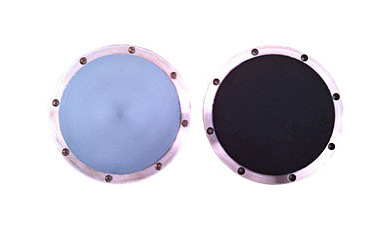The vacuum coating process is very complicated. Due to the different coating principles, it is divided into many types, and they have a unified name just because they all require a high degree of vacuum. Therefore, for different principles of vacuum coating, the factors that affect the uniformity are also different. And the concept of uniformity itself will have different meanings depending on the scale of the coating and the composition of the film.

The concept of film uniformity:
1. The uniformity in thickness can also be understood as roughness. On the scale of optical film (that is, 1/10 wavelength as a unit, about 100A), the roughness can be easily controlled within 1/10 of the wavelength of visible light, which means that there is no obstacle to the optical properties of the film in vacuum coating.
But if it refers to the uniformity on the atomic layer scale, that is to say, to achieve 10A or even 1A surface smoothness, it is the main technical content and technical bottleneck in vacuum coating. The specific control factors will be explained in detail according to different coatings.
2. The uniformity of chemical composition:
That is to say, in the film, the atomic composition of the compound will easily produce uneven characteristics due to the small size. For the SiTiO3 film, if the coating process is unscientific, then the actual surface composition is not SiTiO3, but may be other proportions. The coated film is not the chemical composition of the desired film, which is also the technical content of vacuum coating.
3. Uniformity of lattice order degree:
This determines whether the film is single crystal, polycrystalline, or amorphous, which is a hot issue in vacuum coating technology, see below for details.
There are two main categories:
1. For evaporation coating:
Generally, the target material is heated to evaporate the surface components in the form of radicals or ions, and settle on the surface of the substrate, and form a thin film through the film forming process (scattered point-island structure-vagus structure-layered growth).
Thickness uniformity mainly depends on:
1) The degree of lattice matching between the substrate material and the target material;
2) The surface temperature of the substrate;
3) Evaporation power and rate;
4) Vacuum degree;
5) Coating time and thickness.
Component uniformity:
The uniformity of the evaporation coating composition is not easy to guarantee. The specific factors that can be adjusted are the same as above. However, due to the limitation of the principle, the uniformity of the evaporation coating composition is not good for non-single-component coatings.
Uniformity of crystal orientation:
1) Lattice matching degree;
2) Substrate temperature;
3) Evaporation rate.
2. For sputtering coating:
It can be simply understood as the use of electrons or high-energy lasers to bombard the target material, and the surface components are sputtered out in the form of radicals or ions, and finally deposited on the surface of the substrate, undergoing a film-forming process, and finally forming a thin film.
There are many types of sputtering coating. Generally speaking, the difference from evaporation coating is that the sputtering rate will become one of the main parameters.
The laser sputtering coating PLD in the sputtering coating is easy to maintain the uniformity of the composition, but the thickness uniformity of the atomic scale is relatively poor (because it is pulse sputtering), and the control of the crystal orientation (outer edge) growth is also relatively general. Taking PLD as an example, the main factors are: the degree of lattice matching between the target material and the substrate, the coating atmosphere (low-pressure gas atmosphere), the substrate temperature, the laser power, the pulse frequency, and the sputtering time.
For different sputtering materials and substrates, the best parameters need to be determined experimentally, and they are different. The quality of coating equipment mainly depends on whether it can accurately control the temperature, whether it can ensure a good vacuum, and whether it can ensure a good vacuum Cavity cleanliness. The MBE molecular beam outer edge coating technology has solved the above-mentioned problems relatively well, but it is basically used for experimental research. The more commonly used integrated coating machines in industrial production are mainly ion evaporation coating and magnetron sputtering coating.
Copyright © Zhengzhou CY Scientific Instrument Co., Ltd. All Rights Reserved Update cookies preferences
| Sitemap | Technical Support: 